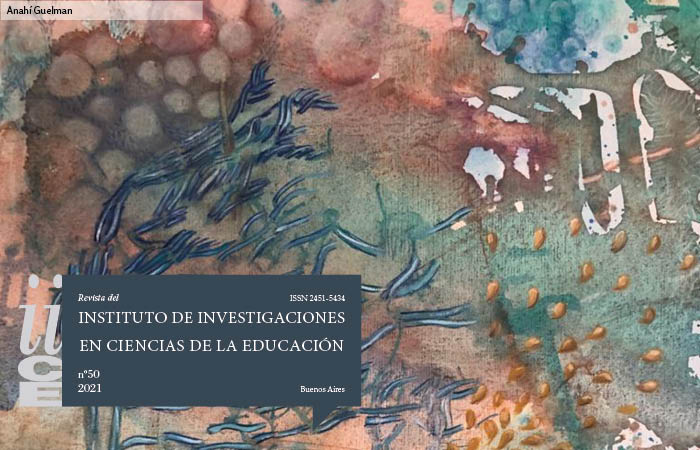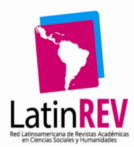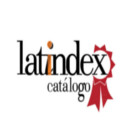Generation gap and academic conditions for the knowledge production in Mexico
Keywords:
generation gap, researchers, knowledge production, meritocracy
Abstract
The article arises from the interest in analyzing the conditions of researchers in the production of knowledge in the different stages of development of their careers. The analytical emphasis took place in the generational dimension and discusses some meritocratic mechanisms of legitimation that exist in the gaps generationals between researchers. This article presents part of the analysis of the empirical work of the research “Academic freedom and the conditions of production and collective mobilization of knowledge of the researchers ”, with the representation of twelve interviews conducted at the National Autonomous University of Mexico, that belong to the National System of Researchers (NSR). The results indicate, in one hand, that for academics who are starting their careers it is increasingly important to be part of the NSR, due to the need to be able to access to a better working conditions, and in the other hand, that for the academics with more experience the interest is focused on permanence, even when they can access the retirement stage, because they stop having a contractual relationship with the University and therefor, they will lose the distinction of the NRS and the economic stimulus.Downloads
Download data is not yet available.
References
Acosta, A. (2003). Estado, políticas y universidades en un periodo de transición. Guadalajara , Universidad de Guadalajara/ Fondo de Cultura Económica.
Altbach, P. G.; Reisberg, L. y Rumbley, L. E. (2010). Teaching, learning and assessment. En Trends in global higher education: Tracking an academic revolution, pp. 111-122 . Rotterdam, Sense Publishers.
Banco Mundial. (2021). Investigadores dedicados a investigación y desarrollo. Disponible en: https://datos.bancomundial.org/indicador/SP.POP.SCIE.RD.P6?contextual=region&end=2016&locations=MX&start=2016&view=bar
----------. (2021a). World Development Indicators: Science and technology. Disponible en: http://wdi.worldbank.org/table/5.13#
Birnbaum, R. (1988). Problems of governance, management and leadership in academic institutions. En The Cybernetics of Academics Organization and Leadership, pp. 3-29 . San Francisco , Jossey-Bass.
Bourdieu, P. (1994). El campo científico. En Los usos sociales de la ciencia. Buenos Aires, Nueva Visión.
----------. (2008). Homo academicus. Buenos Aires, Siglo XXI.
Casas, R. (2020). Políticas públicas de ciencia y tecnología en América Latina. Ante la encrucijada de los cambios políticos. Teuken Bidikay - Revista Latinoamericana de Investigación en Organizaciones Ambiente y Sociedad. 11(16): 21-28.
Collins, R. (1989). La sociedad credencialista. Madrid, Akal.
Consejo Nacional de Ciencia y Tecnología. (2016). Criterios Sistema Nacional de Investigadores. Disponible en: https://www.conacyt.gob.mx/index.php/sni/otros/marco-legal-sni/criterios-sni/14313-criterios-de-evaluacion-para-investigadores-nacionales-emeritos/file
----------. (2017). Reglamento del Sistema Nacional de Investigadores. México , Diario Oficial de la Federación- CONAC yT.
----------. (2018). Sistema Nacional de Investigadores. Listado de Investigadores Vigentes por Grado, Nivel, Adscripción, Entidad Federativa y Área de conocimiento .Disponible en: https://datos.gob.mx/busca/dataset/sistema-nacional-de-investigadores
----------. (2019). Sistema Nacional de Investigadores. Disponible en: https://www.conacyt.gob.mx/index.php/el-conacyt/sistema-nacional-de-investigadores
----------. (2020a). Diario Oficial de la Federación. Reglamento del Sistema Nacional de Investigadores. Disponible en: https://www.dof.gob.mx/nota_detalle.php?codigo=5600871&fecha=21/09/2020
----------. (2020b). Sistema Nacional de Investigadores. Criterios de Sistema Nacional de Investigadores. Disponible en: https://www.conacyt.gob.mx/index.php/sni/convocatorias-conacyt/convocatorias-sistema-nacional-de-investigadores-sni/marco-legal-sni/criterios-sni
Diario Oficial de la Federación. (1982). Plan Nacional de Desarrollo 1983-1988. Disponible en: http://dof.gob.mx/nota_detalle.php?codigo=4805999&fecha=31/05/1983
Díaz, S. C .; López, L. M. y Roncallo, L. L. (2017). Entendiendo las generaciones: una revisión del concepto, clasificación y características distintivas de los Baby Boomers, X y Millennials. Clío América, 11 (22 ): 188-204.
Galaz Fontes, J. F.; Martínez Stack, J. y Gil Antón, M. (2020). The Emergence of the new Mexican academic meritocracy. Higher Education Governance & Policy, 1(2 ): 138-151.
Gil, M. (2010). El oficio académico: los límites del dinero. En Arnaut, A. y Giorguli, S. Los grandes problemas de México. VII Educación, pp. 419-448 . México, El Colegio de México A. C.
Leccardi , C. y Feixa, C. (2011). El concepto de generación en las teorías sobre la juventud. Ultima década,19 (34), 11-32 . Disponible en: https://dx.doi.org/10.4067/S0718-22362011000100002
Lyons, S . y Kuron, L. (2014). Generational differences in the workplace: A review of the evidence and directions for future research. Journal of organizational Behavior, 35(1): 139-157. Disponible en: https://onlinelibrary.wiley.com/doi/abs/10.1002/job.1913
Lyons, S.; Urick, M.; Kuron, L. y Schweitzer, L. (2015). Generational Differences in the workplace: There is complexity beyond the stereotypes. Industrial and organizational Psychology, 8: 346-356. doi:10.1017/iop.2015.48.
Markovits, D. (2019). The meritocracy trap. Londres, Penguin Random House.
Cultura Organizacional y Brecha Generacional: Caso IIESCA Martínez Caso IIESCAXalapa, Editorial Universidad Veracruzana, Instituto de Investigaciones y Estudios Superiores de las Ciencias Adminstrativas Disponible en: https://cdigital.uv.mx/bitstream/handle/123456789/47015/MuñozMartinezArely.pdf?sequence=3&isAllowed=y
QS World University Rankings. (2020). Top University Rankings. Disponible en: https://www.topuniversities.com/university-rankings/world-university-rankings/2021
----------. (2021). Clasificaciones de QS World University Rankings. Disponible en: https://www.topuniversities.com/university-rankings/world-university-rankings/2021
Ranking Web de Universidades. (2021). Disponible en: http://www.webometrics.info/es/Latin_America_es
Sandel, M. (2020). The sorting machine. In the Tyranny of merit: What´s become of the common good? Londres, Penguin Random House .
Secretaría de Educación Pública. (2019). Cuerpos académicos reconocidos por PRODEP. Disponible en: https://promep.sep.gob.mx/ca1/
Smith, A. (1954). The Theory of Moral Sentiments. Cambridge University Press.
Universidad Nacional Autónoma de México. (2020a). Portal de estadística universitaria. La UNAM en números 2019-2020. Disponible en: http://www.estadistica.unam.mx/numeralia/
----------. (2020b). Agenda estadística. Personal académico. Disponible en: https://www.planeacion.unam.mx/Agenda/2020/disco/#
Vaccarezza, L. (2004). El campo CTS en América Latina y el uso social de su producción. Revista Iberoamericana de Ciencia, Tecnología y Sociedad, 1(2): 211-218.
Vaccarezza, L. y Zabala, J. (2002). La construcción de la utilidad social de la ciencia. Buenos Aires, Universidad Nacional de Quilmes.
Vinck, D. (2014). Ciencia y sociedad. Sociología del trabajo científico. Buenos Aires, Gedisa.
Altbach, P. G.; Reisberg, L. y Rumbley, L. E. (2010). Teaching, learning and assessment. En Trends in global higher education: Tracking an academic revolution, pp. 111-122 . Rotterdam, Sense Publishers.
Banco Mundial. (2021). Investigadores dedicados a investigación y desarrollo. Disponible en: https://datos.bancomundial.org/indicador/SP.POP.SCIE.RD.P6?contextual=region&end=2016&locations=MX&start=2016&view=bar
----------. (2021a). World Development Indicators: Science and technology. Disponible en: http://wdi.worldbank.org/table/5.13#
Birnbaum, R. (1988). Problems of governance, management and leadership in academic institutions. En The Cybernetics of Academics Organization and Leadership, pp. 3-29 . San Francisco , Jossey-Bass.
Bourdieu, P. (1994). El campo científico. En Los usos sociales de la ciencia. Buenos Aires, Nueva Visión.
----------. (2008). Homo academicus. Buenos Aires, Siglo XXI.
Casas, R. (2020). Políticas públicas de ciencia y tecnología en América Latina. Ante la encrucijada de los cambios políticos. Teuken Bidikay - Revista Latinoamericana de Investigación en Organizaciones Ambiente y Sociedad. 11(16): 21-28.
Collins, R. (1989). La sociedad credencialista. Madrid, Akal.
Consejo Nacional de Ciencia y Tecnología. (2016). Criterios Sistema Nacional de Investigadores. Disponible en: https://www.conacyt.gob.mx/index.php/sni/otros/marco-legal-sni/criterios-sni/14313-criterios-de-evaluacion-para-investigadores-nacionales-emeritos/file
----------. (2017). Reglamento del Sistema Nacional de Investigadores. México , Diario Oficial de la Federación- CONAC yT.
----------. (2018). Sistema Nacional de Investigadores. Listado de Investigadores Vigentes por Grado, Nivel, Adscripción, Entidad Federativa y Área de conocimiento .Disponible en: https://datos.gob.mx/busca/dataset/sistema-nacional-de-investigadores
----------. (2019). Sistema Nacional de Investigadores. Disponible en: https://www.conacyt.gob.mx/index.php/el-conacyt/sistema-nacional-de-investigadores
----------. (2020a). Diario Oficial de la Federación. Reglamento del Sistema Nacional de Investigadores. Disponible en: https://www.dof.gob.mx/nota_detalle.php?codigo=5600871&fecha=21/09/2020
----------. (2020b). Sistema Nacional de Investigadores. Criterios de Sistema Nacional de Investigadores. Disponible en: https://www.conacyt.gob.mx/index.php/sni/convocatorias-conacyt/convocatorias-sistema-nacional-de-investigadores-sni/marco-legal-sni/criterios-sni
Diario Oficial de la Federación. (1982). Plan Nacional de Desarrollo 1983-1988. Disponible en: http://dof.gob.mx/nota_detalle.php?codigo=4805999&fecha=31/05/1983
Díaz, S. C .; López, L. M. y Roncallo, L. L. (2017). Entendiendo las generaciones: una revisión del concepto, clasificación y características distintivas de los Baby Boomers, X y Millennials. Clío América, 11 (22 ): 188-204.
Galaz Fontes, J. F.; Martínez Stack, J. y Gil Antón, M. (2020). The Emergence of the new Mexican academic meritocracy. Higher Education Governance & Policy, 1(2 ): 138-151.
Gil, M. (2010). El oficio académico: los límites del dinero. En Arnaut, A. y Giorguli, S. Los grandes problemas de México. VII Educación, pp. 419-448 . México, El Colegio de México A. C.
Leccardi , C. y Feixa, C. (2011). El concepto de generación en las teorías sobre la juventud. Ultima década,19 (34), 11-32 . Disponible en: https://dx.doi.org/10.4067/S0718-22362011000100002
Lyons, S . y Kuron, L. (2014). Generational differences in the workplace: A review of the evidence and directions for future research. Journal of organizational Behavior, 35(1): 139-157. Disponible en: https://onlinelibrary.wiley.com/doi/abs/10.1002/job.1913
Lyons, S.; Urick, M.; Kuron, L. y Schweitzer, L. (2015). Generational Differences in the workplace: There is complexity beyond the stereotypes. Industrial and organizational Psychology, 8: 346-356. doi:10.1017/iop.2015.48.
Markovits, D. (2019). The meritocracy trap. Londres, Penguin Random House.
Cultura Organizacional y Brecha Generacional: Caso IIESCA Martínez Caso IIESCAXalapa, Editorial Universidad Veracruzana, Instituto de Investigaciones y Estudios Superiores de las Ciencias Adminstrativas Disponible en: https://cdigital.uv.mx/bitstream/handle/123456789/47015/MuñozMartinezArely.pdf?sequence=3&isAllowed=y
QS World University Rankings. (2020). Top University Rankings. Disponible en: https://www.topuniversities.com/university-rankings/world-university-rankings/2021
----------. (2021). Clasificaciones de QS World University Rankings. Disponible en: https://www.topuniversities.com/university-rankings/world-university-rankings/2021
Ranking Web de Universidades. (2021). Disponible en: http://www.webometrics.info/es/Latin_America_es
Sandel, M. (2020). The sorting machine. In the Tyranny of merit: What´s become of the common good? Londres, Penguin Random House .
Secretaría de Educación Pública. (2019). Cuerpos académicos reconocidos por PRODEP. Disponible en: https://promep.sep.gob.mx/ca1/
Smith, A. (1954). The Theory of Moral Sentiments. Cambridge University Press.
Universidad Nacional Autónoma de México. (2020a). Portal de estadística universitaria. La UNAM en números 2019-2020. Disponible en: http://www.estadistica.unam.mx/numeralia/
----------. (2020b). Agenda estadística. Personal académico. Disponible en: https://www.planeacion.unam.mx/Agenda/2020/disco/#
Vaccarezza, L. (2004). El campo CTS en América Latina y el uso social de su producción. Revista Iberoamericana de Ciencia, Tecnología y Sociedad, 1(2): 211-218.
Vaccarezza, L. y Zabala, J. (2002). La construcción de la utilidad social de la ciencia. Buenos Aires, Universidad Nacional de Quilmes.
Vinck, D. (2014). Ciencia y sociedad. Sociología del trabajo científico. Buenos Aires, Gedisa.
Published
2021-07-01
How to Cite
Castañeda Bernal, X. Y., Fuentes Hernández, C. P., Pérez Mora, R., & Inguanzo Arias, B. L. (2021). Generation gap and academic conditions for the knowledge production in Mexico . Revista Del IICE, (50), 55-74. https://doi.org/10.34096/iice.n50.11266
Issue
Section
Dossier: Libre acceso al conocimiento y pub. científicas en el campo educativo











